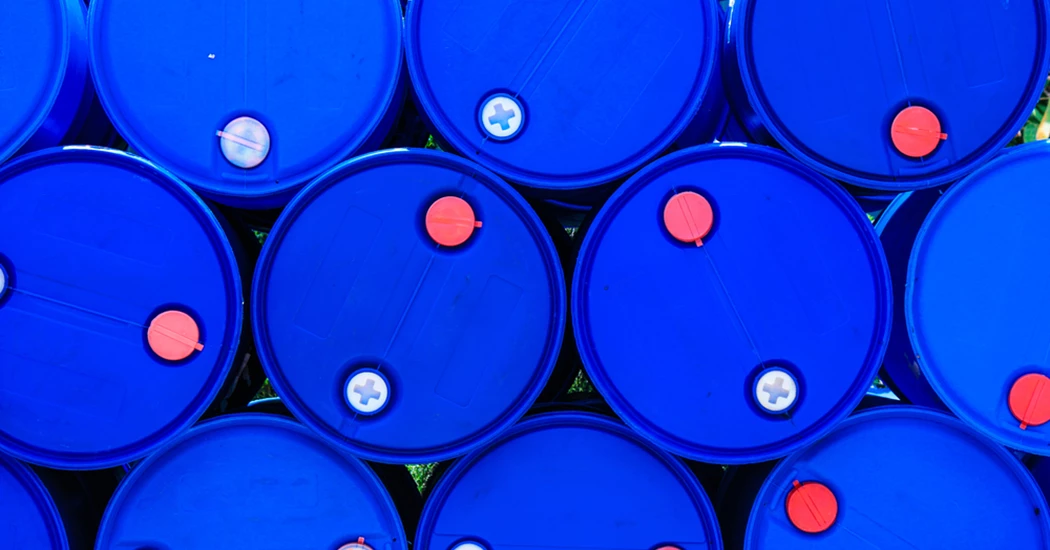OPEC+ producers announce oil output cuts of 1.6 million bpd
Oil prices surged on Monday and Goldman Sachs revised its oil price outlook after multiple OPEC+ member states announced voluntary oil production cuts totalling more than 1.6 million barrels per day from May until the end of the year in a measure they said was aimed at supporting the market stability.
The US benchmark West Texas Intermediate rallied 8% on Monday morning, the biggest intraday move in more than a year, to cross $80 mark a barrel, and Brent gained more than 5.5% to cross the $85 a barrel barrier before losing some of the gains. The dollar meanwhile advanced with Treasury yields.
The biggest production cut in the OPEC+ grouping announced on Sunday was from Saudi Arabia – the world’s biggest oil exporter and OPEC’s largest producer – which slashed its daily production by 500,000 barrels.
Saudi Arabia’s Ministry of Energy said in a statement that the Kingdom will implement a voluntary cut of 500 thousand barrels per day from May till the end of 2023 in coordination with some other OPEC and non-OPEC participating countries in the Declaration of Cooperation.
“This voluntary cut is in addition to the reduction in production agreed at the 33rd OPEC and non-OPEC Ministerial Meeting on October 5, 2022. The Ministry of Energy official emphasised that this is a precautionary measure aimed at supporting the stability of the oil market,” the statement said.
The UAE’s Minister of Energy and Infrastructure, Suhail Al Mazrouei, said on Sunday the Gulf state will voluntarily cut oil output by 144,000 barrels per day from May through to the year-end.
Iraq announced a production cut of 211,000 barrels per day, Kuwait slashed output by 128,000 barrels per day, while Kazakhstan cut 78,000 barrels per day and Oman 40,000 barrels per day. Algeria said it would cut its output by 48,000 barrels per day.
The White House termed the OPEC+ decision as ill-advised, and added that the Biden administration would work with producers and consumers with a focus on oil prices.
Goldman Sachs, which had recently lowered its oil price forecasts for 2023 to $94 a barrel citing growing crude supplies and lower demand, said on Monday that the OPEC+ output reduction could provide a 7% boost to oil prices, contributing to higher Saudi and OPEC+ oil revenues.
Russia meanwhile said on Sunday the production cut of 500,000 barrels per day it was implementing from March to June would continue until the end of the year. “As a responsible and preventive action, Russia is implementing a voluntary reduction of 500,000 barrels per day until the end of 2023,” Alexander Novak, a deputy prime minister in charge of energy, said in a statement.
The OPEC cuts would initially add up to about 1.1 million barrels a day from May, but from July, due to the extension of Russia’s existing supply reduction, it will amount to cuts of 1.6 million barrels per day.
Here is a quick summary of the OPEC+ production cuts announced on Sunday:
- Saudi Arabia: 500,000 bpd
- Russia: 500,000 bpd
- Iraq: 211,000 bpd
- UAE: 144,00 bpd
- Kuwait: 128,000 bpd
- Kazakhstan: 78,000 bpd
- Algeria: 48,000 bpd
- Oman: 40,000 bpd
- Gabon: 8,000 bpd
On Friday, oil prices closed higher in its second consecutive week of gains. Brent rose 1.64 per cent to settle at $79.89 a barrel, while the US crude benchmark West Texas Intermediate gained 1.75 per cent to close at $75.67 a barrel.
Widespread industry confidence at the beginning of 2023 that oil prices were heading back to $100 a barrel has been dented by a variety of factors, including the collapse of two US lenders, and the Credit Suisse rescue. But OPEC recently raised its 2023 forecast for Chinese oil demand growth as the country gradually reopens its economy following nearly three years of Covid-induced shutdowns.
Sunday’s announcement by the OPEC+ grouping, which also includes Russia, follows a historic cut in October, when the 23-member alliance slashed its crude output by 2 million barrels per day.
KEEPING THE ENERGY INDUSTRY CONNECTED
Subscribe to our newsletter and get the best of Energy Connects directly to your inbox each week.
By subscribing, you agree to the processing of your personal data by dmg events as described in the Privacy Policy.
More oil news

China’s Weak Winter LNG Demand Provides Relief for Rival Buyers

Oil Edges Higher Ahead of US Inflation Figures and OPEC Report

Oil Slips as Glut Outlook Outweighs Optimism on China Stimulus

Oil Edges Higher as Traders Weigh Fallout From Syrian Upheaval

China’s Solar Industry Looks to OPEC for Guide to Survival

Five Key Charts to Watch in Global Commodity Markets This Week

Oil Steadies as OPEC+ Opts Again to Delay Plan to Restore Output

NMDC LTS to acquire 70% equity stake in Emdad

Oil Holds Drop as OPEC+ Decision on Supply Takes the Spotlight
















